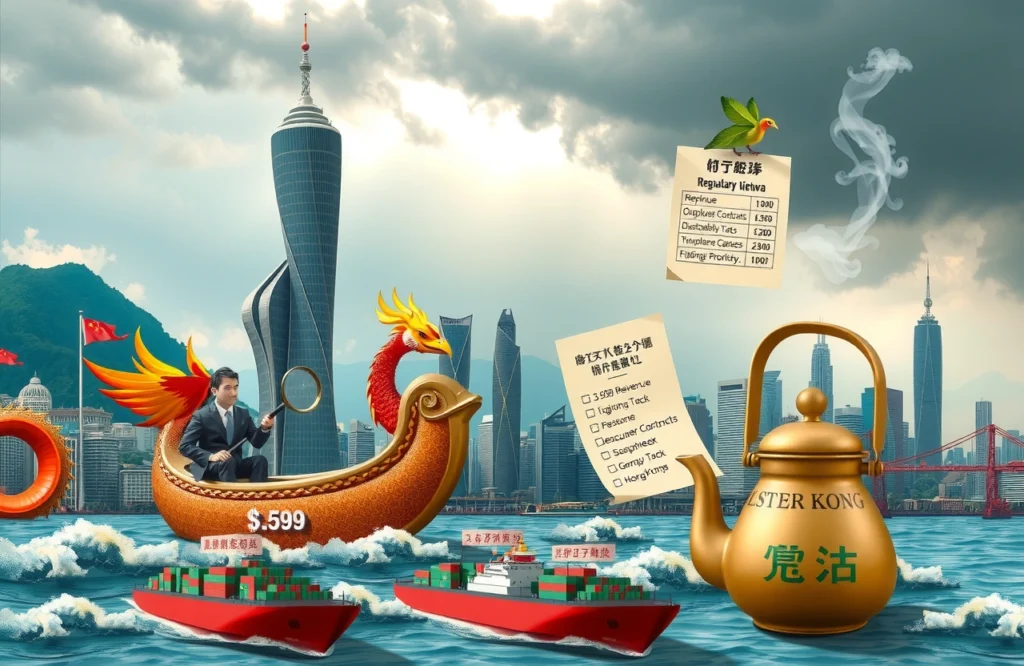Key Takeaways
– Donald Trump announced Vietnam will face 20% tariffs on exports to the U.S. with transshipped goods taxed at 40%
– The deal marks only the second agreement reached since Trump rolled out reciprocal tariffs targeting trade deficits
– Vietnam ranks as America’s 7th largest import source with $130+ billion in exports including apparel for Nike
– Negotiations remain stalled with Japan and EU ahead of July 9 deadline for tariff hikes
– Experts warn reshoring risks and price hikes may impact consumer goods supply chains
Former President Donald Trump has escalated his trade offensive days before a critical deadline, announcing a landmark agreement imposing punitive tariffs on Vietnam. Under terms revealed via Truth Social, Vietnam’s exports to the U.S. will now face mandatory tariffs of at least 20% – dramatically reshaping trade relations with America’s tenth-largest trading partner. This U.S.-Vietnam trade deal marks Trump’s second major pact since introducing controversial reciprocal tariffs targeting trade imbalances.
Coming less than two weeks before Trump’s July 9 deadline for broader tariff hikes, this agreement offers Vietnam partial relief from the previously proposed 46% duty. Yet significant cost increases loom for apparel giants like Nike that manufacture extensively in Vietnam. With separate 40% penalties proposed for transshipped Chinese goods routed through Vietnamese ports, this U.S.-Vietnam trade deal establishes stringent new trade barriers while leaving other negotiations with Japan and the EU in limbo. Industry analysts predict widespread supply chain disruptions and consumer price impacts.
The Reciprocal Tariff Framework Explained
President Trump deployed his novel “reciprocal tariff” strategy in early April 2024, structuring tariffs based directly on bilateral trade deficits. Under this framework:
– All trading partners initially received tariffs calculated by Trump’s “trade deficit score”
– Rates ranged from 20% to over 50%, averaging 33% across major economies
– Vietnam faced the third-highest initial duty at 46%
Trump temporarily reduced all reciprocal tariffs to 10% through July 9 to allow negotiation time – a grace period now nearing expiration. Unlike conventional tariffs targeting specific industries, Trump’s system imposes blanket percentages on all imports based purely on national trade imbalances.
Escalation Timeline Toward Deadline
April:
– Reciprocal tariffs announced
– Temporary 10% ceiling implemented
July 4:
– U.S.-Vietnam trade deal finalized
July 9:
– Automatic tariff escalation unless bilateral deals signed
Decoding the U.S.-Vietnam Trade Terms
Trump’s Truth Social announcement outlined three core provisions in this trade agreement:
Tariff Structures and Targets
– Standard exports: 20% base tariff on all Vietnamese goods
– Transshipment penalty: 40% rate targeting Chinese goods re-exported through Vietnam
– U.S. export advantage: Zero tariffs on American goods entering Vietnam
The asymmetric design mirrors Trump’s “America First” doctrine – compelling Vietnam to fully open its market to U.S. exports while accepting significant barriers to its own. As Trump stated: “They’ll ‘open their market to America’ while facing our tariffs.”
Vietnam’s Trade Profile Impact
According to U.S. Census Bureau data, Vietnam represents:
– 10th largest U.S. trading partner
– 7th largest import source
– $130+ billion annual exports to U.S.
Major impacted industries:
– Footwear/apparel manufacturing
– Electronics components
– Furniture production
Brands contracting Vietnamese manufacturers:
– Nike
– Lululemon
– Adidas
This U.S.-Vietnam trade deal threatens to significantly elevate costs for these sectors.
Stalled Negotiations With Key Economies
As Trump’s July 9 deadline approaches, discussions with other major economies remain deadlocked:
Trump’s Japan Critique
In blunt remarks this week, Trump criticized Japan’s trade stance:
“Japan should pay 30%, 35% – whatever we decide. They’re spoiled.”
Current Japan-U.S. Trade Stats:
– $145B annual trade deficit
– Proposed reciprocal tariff: 35%
Trump admitted: “I doubt any agreement emerges – their position is firm.”
European Union Quarrel
The EU maintains willingness to accept 10% baseline tariffs but demands exemptions for:
– Pharmaceuticals
– Alcoholic beverages
– Semiconductors
– Commercial aircraft
European Commission Executive Vice President Valdis Dombrovskis stated “targeted carve-outs remain essential” – a position Trump has rejected.
Global Supply Chain Implications
This U.S.-Vietnam trade deal accelerates Trump’s broader tariff architecture:
– Only second bilateral agreement reached
– July deadline pressures intensify
Potential result: Reshoring of U.S. manufacturing
This U.S.-Vietnam trade deal may trigger:
– Apparel industry price hikes
– Supply chain diversification
– Foreign direct investment shifts
Vietnam hosts over 2,300 foreign-owned factories responsible for 70% of export manufacturing. Barclays estimates apparel prices could rise 5-8% with textile tariffs.
Transshipment Enforcement Concerns
The 40% transshipment tariff aims to prevent Chinese exports disguised as Vietnamese goods. However:
– Verification remains operationally challenging
– Fraud risks escalate
– Export documentation discrepancies
Vietnam-sourced goods containing Chinese components notably complicate origin tracing. Semiconductor exports fall under particular scrutiny.
Broader Economic Ripples
This agreement showcases Trump’s deal-by-deal strategy prioritizing leverage over multilateral structures:
– Departs WTO frameworks
– Eschews TPP-like accords
– Focuses bilaterally
The U.S.-Vietnam trade deal establishes a template Trump could apply to future negotiations:
– Rebalancing imports
– Market access concessions
– Tiered tariffs
Morgan Chase foreign exchange strategist Rama Dollah anticipates: “We’ll see acceleration of corporate nearshoring in ASEAN countries with preferential tariffs.”
Consumer Impact Forecast
Bay Street analysts project:
– Sneaker/apparel price hikes
– U.S. domestic textile production surge
– Retail margin compression
UBS predicts Vietnam-sourced footwear marking 12-15% cost increases post-tariffs.
Navigating New Realities
Businesses must prepare immediately as reciprocal tariffs take effect:
Manufacturers should:
– Audit Vietnamese supply chains
– Model tariff cost impacts
– Diversify sourcing
– Accelerate trade compliance
International traders should urgently:
– Scrutinize Vietnamese import transactions
– Tighten origin verification
– Implement tariff classification
– Develop tariff mitigation strategies
Trump’s July 9 deadline signals unavoidable changes ahead. Companies with Vietnam exposure should conduct staff briefings ASAP – explore every contingency from pricing adjustments to factory shifts. For real-time updates monitor China Ministry of Commerce channels.




